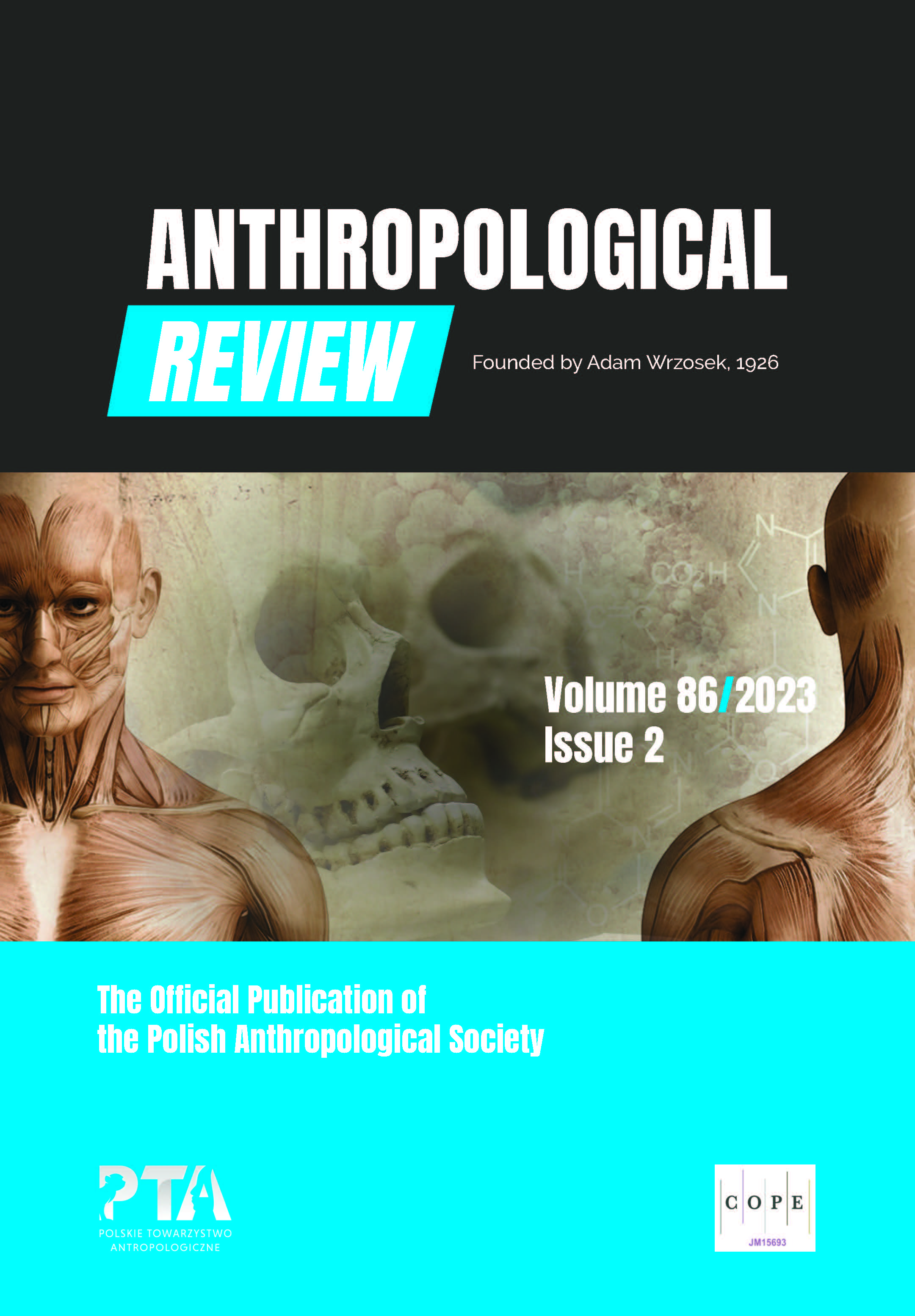Assessment of dental caries among children and adults inhabiting Starorypin (11th–12th c.) compared to other Early Medieval populations from Poland
Assessment of dental caries among children and adults inhabiting Starorypin (11th–12th c.) compared to other Early Medieval populations from Poland
Author(s): Jacek Tomczyk, Anna Myszka, Jadwiga Lewandowska, Marta Zalewska, Wojciech Niemiro, Dorota Olczak-KowalczykSubject(s): Anthropology, Social Sciences, Middle Ages
Published by: Wydawnictwo Uniwersytetu Łódzkiego
Keywords: dental caries; Starorypin; Early Medieval
Summary/Abstract: Dental caries testing provides information about diet, hygiene and eating habits. This information can be useful in reconstructing the living conditions of historical populations. The aim of this study was to determine the frequency of dental caries in adults and children in the Early Middle Ages population from Starorypin (Poland) and compare the results with other early medieval populations from Poland. A total of 346 adult permanent teeth and 131 deciduous teeth were included in the study. Both the macroscopic method and imaging methods (X-ray and a light-induced fluorescence technique) were applied in the study. Dental caries were recorded in 33% (115/346) of the permanent teeth and in 10% (13/131) of the deciduous teeth. In permanent teeth, dental caries were diagnosed on the approximal surface, while dental caries in deciduous teeth are most often diagnosed on the occlusal surface. Early childhood caries (ECC) were mainly diagnosed on the teeth of individuals within the 3.0–5.5 years age group. The frequency of dental caries seemed to be high compared to other early medieval populations. The obtained results may have been influenced by ‘broadband’ odontological research methods, not limited to the macroscopic method alone. However, it can be also argued that the frequency of dental caries observed in this study might have been influenced by a highly varied diet, as indicated by archaeozoological and archaeobotanical studies. The surfaces affected by dental caries correspond to findings of other studies showing that in adults, these were the approximal surfaces, while they were the labial/occlusion surfaces on the deciduous teeth.
Journal: Anthropological Review
- Issue Year: 86/2023
- Issue No: 2
- Page Range: 39-50
- Page Count: 12
- Language: English

